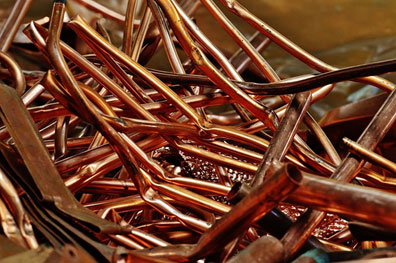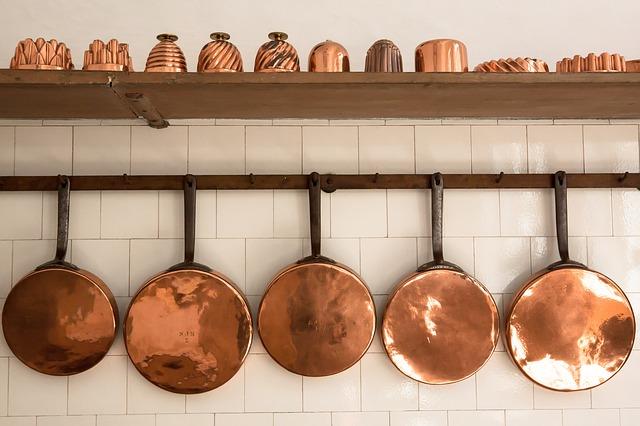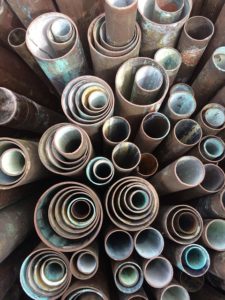
Why Copper Alloys Are Architecture-Friendly
Ever since copper was discovered around 10,000 years ago, we’ve become obsessed with exploring its capacities, and all the hard work has paid off well as we now see so many alloys of copper being utilized extensively for various practical applications. But why exactly are copper alloys so in demand in construction? Surely there are many other metals out there that look as good as them. Well, as it turns out, copper alloys possess certain desirable properties that other metals are deficient in or lack completely.
Architects love copper alloys because they offer some kind of design freedom. No other metals are flexible enough to give architects so many options to create designs that are both stunning and enduring. Copper alloys come in an amazing diversity of colors and surface textures as well as a vast array of available product forms, including tubes, bars, and sheets. Thanks to their incredible malleability, copper alloys can adapt to all shapes, dimensions, and luster requirements.
Copper alloys are also very easy to join both mechanically and metallurgically. Having a stable molecular structure, they are extremely durable as well. Some copper-based items from the ancient times still survive today, thanks to copper’s unmatched ability to resist corrosion. Despite that, it’s amazing how many ways you can tint, oxidize, or alter their color. Their thermal and electrical conductivities are off the charts, too. Simply put, there are no metals out there that can match copper alloys when it comes to architectural litheness.
How Copper Alloys Are Identified
As the list of copper alloys grow longer each year, it’s becoming harder and harder to classify them. The risk of mistaking one alloy for another is increasing radically, and it’s not a simple problem. Even choosing an alloy that’s only slightly different from what you actually need could lead to a disaster. This is why we use the Unified Numbering System (UNS) for metals and alloys in North America. In this system, metal alloys are arranged into groups based on their chemical composition, or more specifically on the main and secondary elements they consist. For instance, all copper alloys with zinc as the secondary content are classified as brasses and those that have tin are classified as bronzes.
In the UNS, copper alloys are denoted C followed by five numerical digits. Each combination is unique and represents a particular alloy. UNS designations for other types of metals follow the same format but use different letters. There are currently about 800 copper alloys identified using the UNS. Imagine having to name them the traditional way; that would be utterly confusing. The UNS can help eradicate confusions even in the simplest of ways, such as when selecting bronze shower rods, bronze curtain rods, or stair railings.
Five Principal Families of Copper Alloys and Their Uses
As previously mentioned, copper alloy designations are determined by their secondary content, and so are their families. There are five principal families of copper, each of them with a different primary inclusion. Before proceeding to learning how to install fixed shower curtain rods or how to preserve the luster of your brass furniture, first find out the different families of copper alloy available and their uses.
-
Coppers
– Although not necessarily alloys of copper (because metals considered alloys contain two or more metallic elements), metals of different grades and thicknesses that are made purely of copper belong to this category. Their differences in physical properties are due to their thickness and the manner by which they were manufactured. Copper material suppliers usually have a separate catalog for this group of copper alloys.
-
Bronzes
– The oldest known alloy of copper, bronze is made up of copper and tin. A small portion of other metals are also added to produce different varieties, consequently benefiting diverse applications. Phosphor bronze, for instance, is 0.01% to 0.35% phosphorous. The resulting alloy can be used for fasteners, welding rods, and heavy duty bridge plates. Silicon bronze, on the other hand, is 2.80% to 3.80%, making it the most fluid of all copper alloys and it has excellent corrosion resistance as well. You may not notice it but many of your household furniture and fixtures may be made of bronze, including bronze shower curtain rods and bed frames.
-
Brasses
– Replace tin with zinc as the secondary alloying content of copper and you’ll produce brass. This gold-like alloy is available in a wide range of product forms, including plate, sheet and strip for interior wall and column cladding, tubes and rods for fixtures and railings, wires for screens and grillwork. Like bronze, different types of brass can be produced by adding other metals into the mixture. Brasses can be find both indoors and outdoors.
-
Copper Nickels
– Due to their high corrosion and tarnish resistance, copper nickels (also called cupronickels) are well-suited for coinage. Many of the coins we have in the United States are made from certain types of copper nickels.
-
Nickel Silvers
– This group of copper alloys is often mistaken for brasses as both groups share certain qualities. The only difference is nickel silver’s warm, silvery white color (even though it contains no silver), which is why it is also popularly known as white silver.
Whether you’re looking to renovate your bathroom and include shower rods bronze setup or simply beef up your kitchen with a shiny counter cladding, copper alloys are your best bet. Remember to consult with a certified copper sheet supplier like Rotax Metals if you are not familiar with the different types and grades of copper alloys so that you can pick the right material for your project. By giving them details of your plan, they can help you narrow down the vast choices available.
Sources:
https://www.copper.org/publications/pub_list/pdf/A4039-ArchitecturalApplications.pdf



